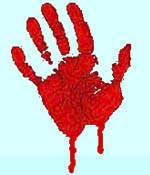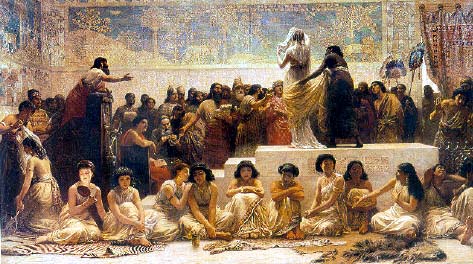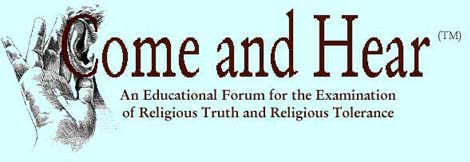
Death Penalty and Talmud Law | |||||||||||||||||||||||||||||||||||||||||||
 In 1999, the US Supreme Court accepted a death penalty brief based wholly on Talmud law. The advocates say the Talmud has a better way. Does it?
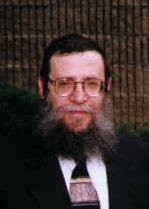
Rabbi Noson Gurary founded The National Institute for Judaic Law to educate American jurists and laws students about Judaic law. He is quoted in the Jerusalem Post: 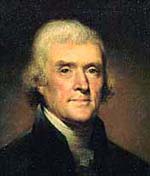
Thomas Jefferson, author of the Declaration of Independence. 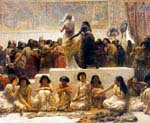
Babylonian Marriage Market by Edwin Long, 1875 (detail) (note ironic title) 
Justice Antonin Scalia. Along with Justices Ginsburg and Breyer, Justice Scalia attended the Kosher dinner held at the Supreme Court building on November 5, 2002, to mark the founding if the Washington-based National Institute for Judaic Law. 
You can help in the battle for Truth, Justice, and the American Way! Fight the forces of censorship and suppression of the Talmud, and bring about understanding between peoples of different faiths. 
"US President George W. Bush sent greetings and applauded the institute for promoting an 'understanding of Judaism's rich tradition of legal thought. As we face new challenges and welcome new opportunities, our society must continue to promote good character and strong values. Through the study and teaching of Jewish law and philosophy you are contributing to a growing culture of service, citizenship, and responsibility in America,' Bush wrote." |
This is the fourth in a 4-part series on the Death Penalty and Talmud Law. In Sentence and Execution (Part 1 of "Death Penalty and Talmud Law") we watched the US Supreme Court create a precedent by accepting for consideration a brief based wholly on Talmud law. We watched as Israeli and American legal experts recommended that, on the issue of humanitarianism and the death penalty, that the US should use Talmud law as the exemplar. What was missing from this presentation? The Orthodox Jewish advocates failed to mention that US and Talmud law are fundamentally incompatible. Over the cornice of the Supreme Court building are etched these words:
In contrast, Talmud law insists on unequal justice under law. Talmudic law holds there is one law for Jews, and one for Gentiles. This is not inconsistent with the Old Testament, in which LORD God decrees that Jews should not enslave other Jews: Gentiles are the proper slaves of Jews.
Laws concerning slaves — bondmen, bondmaid, bondwomen, handmaids, etc. — are found throughout the Talmud in almost every tractate. A sampling of such laws is included in the Appendix: Talmud Slavery Laws. Gentiles Easy To ConvictUnder Jewish law, Gentiles are easy to convict for capital crimes; but it is difficult to convict Jews. The standards of proof are different. For a Jew to be convicted by a Jewish court, two eyewitnesses must have seen the perpetrator about to commit the crime and warned him of the potential penalty. The murderer must verbally answer that he chooses to proceed anyway. (For a non-Jew, only one witness is required and no verbal warning.) — Rabbi Adlerstein, as told to Naomi Pfefferman (5) Rabbi Adlerstein's statement is confirmed by the Talmud. (When excerpting the Talmud, we sometimes omit footnotes and non-germane text. The omission of text is indicated by an ellipsis (…). The full text and footnotes may be found by following the hot link at the end of the excerpt. It is our pleasure to make available the text of the complete tractates cited in this article, so you may read the Talmud in full context.) GEMARA. … R. Jacob b. Aha found it written in the scholars' Book of Aggada: A heathen is executed on the ruling of one judge, on the testimony of one witness, without a formal warning, on the evidence of a man, but not of a woman, even if he [the witness] be a relation. — Babylonian Talmud, Tractate Sanhedrin 57b Rabbi Adlerstein's statement is also confirmed by Talmud scholar and translator, Rabbi Dr. H. Freedman. In the following quotes, "Noahide" means a non-Jew. Rabbi Dr. Freedman tells us twenty-three judges must sit on a court that hears a capital case against a Jew; when a Gentile is tried on a capital charge, one (Jewish) judge is required.
— Rabbi Dr. Freedman (6) Laws Different for Jew and GentileNot only are the court procedures and the standards of evidence different from one class to the other, the very laws are different. For example, if a Jew murders a Gentile, there is no death penalty. GEMARA. … 'For murder, whether of a Cuthean by a Cuthean, or of an Israelite by a Cuthean, punishment is incurred; but of a Cuthean by an Israelite, there is no death penalty' — Babylonian Talmud, Tractate Sanhedrin 57a But if a Gentile strikes a Jew, "he is worthy of death." GEMARA. … R. Hanina said: If a heathen smites a Jew, he is worthy of death, for it is written, And he looked this way and that way, and when he saw that there was no man, he slew the Egyptian. R. Hanina also said: He who smites an Israelite on the jaw, is as though he had thus assaulted the Divine Presence; for it is written, one who smiteth man [i.e. an Israelite] attacketh the Holy One. — Babylonian Talmud, Tractate Sanhedrin 58b No Jury of Peers under Talmud LawTalmud law does not provide for the accused to be tried by a jury of his peers. In Talmud law, the accused is tried by rabbis. Ox Gets 23 JudgesIn case there were any doubt about the place of the Gentile in Talmud law, the following excerpt from Sanhedrin 2a settles the question. Recall that a capital case against a Gentile is heard by one judge. According to Sanhedrin 2a, a capital case against an ox, a hyena, or a serpent is tried by 23 judges. MISHNAH. … CAPITAL CASES ARE ADJUDICATED BY TWENTY-THREE. THE PERSON OR BEAST CHARGED WITH UNNATURAL INTERCOURSE, BY TWENTY-THREE, AS IT IS WRITTEN, THOU SHALT KILL THE WOMAN AND THE BEAST, AND ALSO, AND YE SHALL SLAY THE BEAST. — Babylonian Talmud, Tractate Sanhedrin 2a Perspective on GentilesA further perspective in traditional Jewish laws and attitudes concerning Gentiles is contained in What About Gentiles? (18) Of particular interest is the modern study by Rabbi David Bar-Chayim, the head of the Makhon Ben Yishai Institute for Torah Research. Israel National Radio calls Rabbi Bar-Chayim "one of Israel's Leading Torah Scholars." (19) Rabbi Bar-Chayim's essay, The Jews Are Called "Man," offers a definitive statement of the doctrines concerning Gentiles, with extensive references to many Jewish Scriptures. (20) US Supreme Court Warms to the TalmudApproximately three years after Nathan and Alyza Lewin filed the Bryan v. Moore amicus curiae brief — a notable event in itself — another notable event took place. A kosher dinner was held to honor the establishment of the National Institute for Judaic Law (NIJL). The dinner was attended by 200 people, including Supreme Court Justices Ruth Bader Ginsberg, Stephen Breyer, Antonin Scalia. Nathan and Alyza Lewin also attended. The site of the dinner? The United States Supreme Court Building in Washington, DC. The Jewish Week reported the event in this manner: What does the Talmud have to say about legal and moral controversies in modern America? — Jewish Week (2) Noson Gurary is an ordained rabbi of the Chabad Lubavitch sect, and follower of late Rabbi Menachem Mendel Schneerson. Chabad Lubavitch is a movement within the Hasidic (sometimes spelled "Chasidic") branch of Judaism. Rabbi Gurary is the executive director of Chabad of Buffalo, New York. (3) He is co-author of several books on Hasidic and Chabad Lubavitch philosophy. (7) Hasidism embraces a Kabbalistic concept of God, the Ein-Sof, (8), a power reminiscent of "The Force" in George Lucas' Star Wars. Coming from Where We've Never BeenThe Jewish Week explains more of the NIJL project. In the following paragraph, macher is a Yiddish word meaning "big shot," a person with access to authorities. (10) According to Gurary, the group, which has hired two researchers to compile reports, will focus initially on the issue of business ethics. Eventually, the goal is to compile a library and database in Washington that will offer Jewish law insights into a host of contemporary issues and to help create courses on the subject at law schools nationwide. The institute will also inaugurate a monthly lunch series for legal machers in Washington. — Jewish Week (2) The Jewish Week continues: "It will be an eye opener for judges, scholars and law students," he told The Jewish Week. "Before you know where you're going, you have to know where you came from. And Jewish law is the basis of our legal system in America." … — Jewish Week (2) It is a safe bet that all of Rabbi Gurary's students had been exposed to the Ten Commandments before, and none were encountering them "for the first time" in his classroom. Hence, Rabbi Gurary's term "Jewish law" must refer to Talmud law rather than Biblical law. Thus, Rabbi Gurary's statement reads that Western law "came from" Talmud law — and that is patently false. The sources for law in Europe and America include Roman law, Anglo-Saxon law, and the Western philosophers of Liberty. Neither American nor European law has ever institutionalized legal superiority of Jew over Gentile. Bush Approves Talmudization of AmericaThe Jerusalem Post reported the November 2002 kosher dinner as follows: Jewish legal experts have created a new institute that will educate jurists and others about 2,000 years of Jewish law and promote the application of the teachings to contemporary legal disputes and other modern- day issues … — The Jerusalem Post (1) Justice Scalia Is a Key PlayerThe Jerusalem Post reports that Justice Antonin Scalia has high praise Jewish law. Scalia, in a letter to the institute's founder, Noson Gurary, wrote that "Jewish law is certainly one of the oldest and most highly developed systems" and explained why the comparative study of legal traditions was beneficial. — The Jerusalem Post (1) In fact, Rabbi Gurary came up with the idea of the Institute as a result of correspondence with Justice Scalia: Gurary said that the idea for the institute came in an exchange of letters in which Supreme Court Justice Antonin Scalia, one of the most conservative Justices, expressed his "fascination with Jewish law." — The Jerusalem Post (1) Justice Scalia has sworn an oath to uphold the Constitution and its Bill of Rights. Yet, by his attendance at this dinner he clearly indicated his support for an antithetical system: Talmud law. How does he reconcile the two? We are not told. Talmud vs. Old TestamentSome non-Jews take the position that the Talmud perverted the Old Testament teachings. See, for example, Chapter I of Elizabeth Dilling's The Jewish Religion: It's Influence Today. The question then becomes: If the Talmud perverted Jewish law, what is real, un-perverted Jewish law — the Jewish law of the Old Testament? What was the quality of justice that pervaded the mind-set of the ancient Jews? Should we in America emulate that Old Testament sense of justice? We have prepared a sampling of Old Testament passages in a compendium called In His Own Image. (21) Let us examine an incident described in Genesis 34. Shechem is a Gentile, a Hivite. Jacob's daughter, Dinah, catches his eye. Under circumstances not fully described, Shechem seduces Dinah. Shechem loves Dinah tenderly and wants her as his wife. He offers to give any dowry asked for her, and suggests to Jacob's family that their two tribes be joined. While harboring vengeance in their hearts, Jacob's sons (the progenitors of the Tribes of Israel) deceitfully agree to the merger, but insist that the Hivite men be circumcised. The Hivites agree. While the Hivite men are recovering from the operation and still in pain, the Hebrews attack the city, kill all the men, and take the women and children as captives — slaves.
While many religions frown on sex before marriage, most of us understand that unmarried sex happens. If a man — or even the son of the prince — slept with our sister before marriage, few of us would think it appropriate to murder all the other men in the city, loot the fields and buildings, and take the women and children into slavery. Nor is it likely, having done such a thing, that we would find a sympathetic judge or jury to hear our case. In short, what we have here is a very different concept of justice — so different that many of us could not agree it should be called "justice." The Bible passage shows that:
Jacob's final statement on the issue is particularly telling: He complained to his sons that they had put him at odds with the local tribes, and they might retaliate. In no other way did Jacob find fault with their actions. We have examined each of the Soncino Scriptural index entries for Genesis Chapter 34: there are no comments from the Sages on the injustice in this incident. All apparently approve of the actions of their ancestors. This is the Old Testament tradition, repeated over and over again through many narratives, as cited in In His Own Image. In particular, note the fate of those who do not follow the Hebrew religion — they are put to death. Is this the tradition of law and justice for which we should trade our Bill of Rights? A Little Beacon of LightMany defend the Old Testament because, they say, it contains commandments that regulate human interaction and produce an ordered society. But earlier civilizations had codes of law regulating human society. See, for example, the Code of Hammurabi, who reigned in Babylon between 1795 and 1750 BC. (12) Moses received the Tablets of Stone in 1275 BC. (13) Hammurabi's Code was on public display approximately 500 years before LORD God's conversation with Moses on Mt. Sinai. In its report of the November, 2002 kosher dinner at the Supreme Court, The Jerusalem Post quotes Rabbi Gurary thus: By demonstrating the philosophy of Jewish law and its moral values, we can bring a little beacon of light to this world. — Rabbi Gurary, quoted in The Jerusalem Post (1) How much light Jewish law and its moral values brought to this world is a subject for open, informed discussion. See also Was Jesus a Jew?
Thank you for your consideration of the above,
NEXT: Blood Ritual 1: Holy Atrocities and Judaism
Endnotes:
Appendix: Talmud Slavery Laws
Sampling of Slavery Laws and Regulations in the TalmudThe basis for Jewish slavery, and particularly the enslavement of Gentiles, is found in the Old Testament in Leviticus 25:44-46.
The Talmud contains detailed regulations concerning slaves and slavery. Use Search Come and Hear™ to search for "slave" in the Talmud tractates on line. Of those approximately 1,500 files, 301 contain slavery regulations. We have selected five for inclusion here, adding emphasis to aid the reader. An ellipsis (…) indicates text omitted by the Come and Hear™ editor. The full text is available through the cite hot link. MISHNAH. A PRESUMPTIVE TITLE TO HOUSES, PITS, DITCHES AND CAVES, DOVECOTES, BATHS, OLIVE PRESSES, IRRIGATED FIELDS, SLAVES, AND ANYTHING WHICH IS CONTINUALLY PRODUCING IS CONFERRED BY THREE YEARS [UNCHALLENGED POSSESSION] FROM DAY TO DAY. — Babylonian Talmud, Tractate Baba Bathra 28a MISHNAH. IF A MAN SELLS A TOWN, HE [AUTOMATICALLY INCLUDES THE HOUSES,7 THE PITS, DITCHES AND CAVES, THE BATHS, THE PIGEON COTES, AND THE IRRIGATED FIELDS [ATTACHED TO IT], BUT NOT MOVABLES. IF, HOWEVER, HE USED THE WORDS 'IT AND ALL ITS CONTENTS', EVEN IF THERE WERE CATTLE AND SLAVES IN IT THEY ARE ALL SOLD. — Babylonian Talmud, Tractate Baba Bathra 68a MISHNAH. IF A MAN SETS FIRE TO A STACK OF CORN IN WHICH THERE HAPPEN TO BE ARTICLES AND THESE ARE BURNT, R. JUDAH SAYS THAT PAYMENT SHOULD BE MADE FOR ALL THAT WAS THEREIN, WHEREAS THE SAGES SAY THAT NO PAYMENT SHOULD BE MADE EXCEPT FOR A STACK OF WHEAT OR FOR A STACK OF BARLEY. [WHERE FIRE WAS SET TO A BARN TO WHICH] A GOAT HAD BEEN FASTENED AND NEAR WHICH WAS A SLAVE [LOOSE] AND ALL WERE BURNT WITH THE BARN, THERE WOULD BE LIABILITY.12 IF, HOWEVER, THE SLAVE HAD BEEN CHAINED TO IT, AND THE GOAT WAS LOOSE NEAR BY IT, AND ALL WERE BURNT WITH IT, THERE WOULD BE EXEMPTION. — Babylonian Talmud, Tractate Baba Kamma 61a MISHNAH. ONE WHO INJURES A FELLOW MAN BECOMES LIABLE TO HIM FOR FIVE ITEMS: FOR DEPRECIATION, FOR PAIN, FOR HEALING, FOR LOSS OF TIME AND FOR DEGRADATION. HOW IS IT WITH 'DEPRECIATION'? IF HE PUT OUT HIS EYE, CUT OFF HIS ARM OR BROKE HIS LEG, THE INJURED PERSON IS CONSIDERED AS IF HE WERE A SLAVE BEING SOLD IN THE MARKET PLACE, AND A VALUATION IS MADE AS TO HOW MUCH HE WAS WORTH [PREVIOUSLY]. AND HOW MUCH HE IS WORTH [NOW]. — Babylonian Talmud, Tractate Baba Kamma 83b MISHNAH. [RABBAN GAMALIEL] BATHED ON THE FIRST NIGHT AFTER THE DEATH OF HIS WIFE. HIS DISCIPLES SAID TO HIM: YOU HAVE TAUGHT US, SIR, THAT A MOURNER IS FORBIDDEN TO BATHE. HE REPLIED TO THEM: I AM NOT LIKE OTHER MEN, BEING VERY DELICATE. WHEN TABI HIS SLAVE DIED HE ACCEPTED CONDOLENCES FOR HIM. HIS DISCIPLES SAID TO HIM: YOU HAVE TAUGHT US, SIR, THAT CONDOLENCES ARE NOT ACCEPTED FOR SLAVES? HE REPLIED TO THEM: MY SLAVE TABI WAS NOT LIKE OTHER SLAVES: HE WAS A GOOD MAN … — Babylonian Talmud, Tractate Berakoth 16b (emphasis added) While the United States of America renounced and outlawed slavery with the passage of the Fourteenth Amendment, there is no mechanism in Judaism that could vacate or cancel the Old Testament or Talmud slavery laws. And they have not been canceled. Those laws are the Word of God. | ||||||||||||||||||||||||||||||||||||||||||
Footnotes:
Full specifics for each of the printed sources are provided in the Bibliography. Outside URLs were valid at the time this article was written. However, be mindful that URLs do change.
- "Jewish law institute launched in DC," Jerusalem Post, November 9, 2002, http://www.jpost.com/servlet/Satellite?pagename=JPost/A/JPArticle/ShowFull&cid=1036830287246, now moved to http://pqasb.pqarchiver.com/jpost/index.html?ts=1042784008 cached at http://www.come-and-hear.com/editor/cp-jp-11-09-2002
- "Jewish Law Comes to D.C.," The Jewish Week, January 8, 2003, http://www.thejewishweek.com/news/newscontent.php3?artid=7074 cached as http://www.come-and-hear.com/editor/cp-jw-01-08-03
- "Rabbi Noson and Rebbetzin Miriam Gurary," Chabad of Buffalo: http://www.chabadofbuffalo.com/RNG.htm cached at html://www.come-and-hear.com/editor/cp-gurary2.
- The Talmud studies "Sentence and Execution," "Accusation and Trial," "Abuse of Context," and "US v. Talmud Law" are found at http://www.come-and-hear.com/editor/capunish_1.html, http://www.come-and-hear.com/editor/capunish_2.html, http://www.come-and-hear.com/editor/capunish_3.html, and http://www.come-and-hear.com/editor/capunish_4.html, respectively.
- Rabbi Yitzchok Adlerstein, director of the Jewish Studies Institute of Yeshiva of Los Angeles, chair of Jewish Law and Ethics at Loyola Law School, and director of Project Next Step at the Simon Wiesenthal Center: http://www.jewishjournal.com/old/deathpenalty2.3.10.0.htm cached at http://www.come-and-hear.com/editor/cp-adlerstein
- Babylonian Talmud, Tractate Sanhedrin 71b, page 486, note 5, available in Come and Hear™ hypertext as Sanhedrin 71b, note 12, http://www.come-and-hear.com/sanhedrin/sanhedrin_71.html#71b_12
- "Chasidism: Development, Theology and Practice," Thirteen Principles of Faith: A Chasidic Viewpoint, http://search.barnesandnoble.com/booksearch/results.asp?ath=Noson+Gurary, cached at http://www.come-and-hear.com/editor/cp-gurary-ein-sof
- "Ein-Sof," The Lurianic Kabbalah http://www.newkabbalah.com/einsof.html, cached at http://www.come-and-hear.com/editor/cp-ein-sof
- "Herrera v. Collins (91-7328), 506 U.S. 390 (1993)," The Legal Information Institute, http://supct.law.cornell.edu/supct/html/91-7328.ZC1.html cached at http://www.come-and-hear.com/editor/cp-herrera
- Trendlines International, Inc. s.v. "macher," at http://www.trendlines.com/?Page_Name=macher
Macher \mah-ker\ n [Yiddish/German maker] 1: a big shot 2: a person with access to authorities 3: a person with contacts - The Essential Talmud, pages 6, 7
- Law Code of Hammurabi (1780 B.C.) http://mcadams.posc.mu.edu/txt/ah/Assyria/Hammurabi.html#Introduction) cached at http://www.come-and-hear.com/supplement/index.html#hammurabi
- Bible Timeline, page 4
- "Thomas Jefferson," Father's Manifesto http://christianparty.net/tjchristian.htm cached at http://www.come-and-hear.com/editor/cp-jefferson-letter
- "The Jefferson Bible: Syllabus," The Jefferson Bible http://www.angelfire.com/co/JeffersonBible/jeffbsyl.html cached at http://www.come-and-hear.com/supplement/jefferson/jeffbsyl.html
- "New Book Destroys the Case for a Jefferson-Hemings Relationship," Thomas Jefferson Heritage Society, Inc., http://www.tjheritage.org/book.html cached at cached at http://www.come-and-hear.com/editor/cp-jefferson-book
- Life of Thomas Jefferson by B. L. Rayner can be found at http://etext.virginia.edu/jefferson/biog
- What About Gentiles? is available at http://www.come-and-hear.com/editor/gentile.html
- "Radio Archives," The Tovia Singer Show, Mar 5, 2002, http://www.toviasinger.com/RadioArchives.aspx cached at http://www.come-and-hear.com/editor/na-inr-chayim
- "Introduction," Daat Emet http://www.daatemet.org.il/daathalacha/en_gentiles1.html cached at http://www.come-and-hear.com/supplement/so-daat-emet/en_gentiles1.html
The full study is available through connecting links. The complete Daat Emet presentation is available through the link at http://www.come-and-hear.com/supplement/index.html#chayim - "In His Own Image" is available at http://www.come-and-hear.com/supplement/ot-select.html
© Copyright Carol A. Valentine, 2003. See copyright statement at http://www.come-and-hear.com/copyright.html
NEXT: Blood Ritual 1: Holy Atrocities and Judaism
| Navigate This Site | |
 | |
| Home | |
| Valentine | |
| Dilling | |
| Talmud | |
| The Rabbis | |
| Supplement | |
| Glossary | |
| Download | |
| Admin | |
| | |
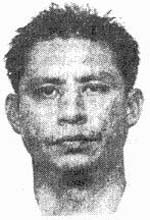 Leonel Torres Herrera
Leonel Torres Herrera  Genuine Come and Hear™ CDs do not contain executable programs. When making CDs, do not include any files that end in .exe, .com, .bat, .vbs, .doc, .pif, .sit, or .scr. The person receiving the CD should use his own browser to view the files. This helps to protect him from harmful programs and viruses.
Genuine Come and Hear™ CDs do not contain executable programs. When making CDs, do not include any files that end in .exe, .com, .bat, .vbs, .doc, .pif, .sit, or .scr. The person receiving the CD should use his own browser to view the files. This helps to protect him from harmful programs and viruses. 




